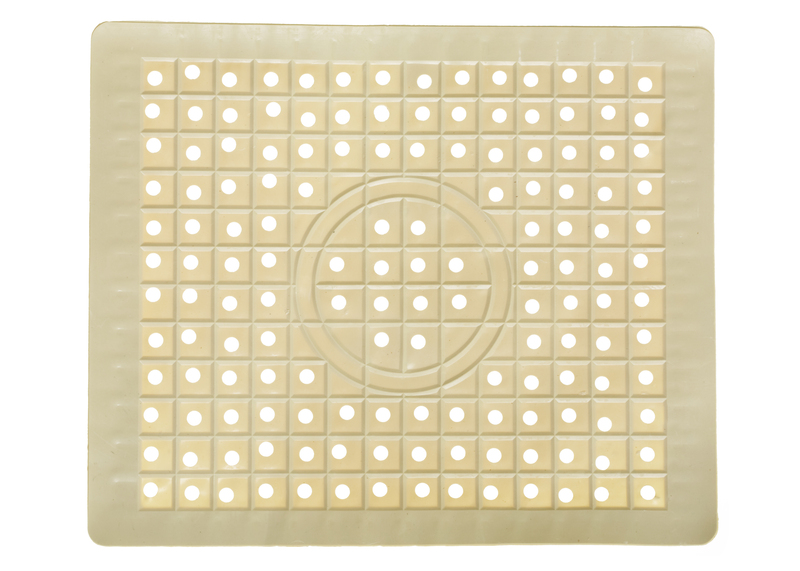Quick Fixes for Eradicating Damp Smell
Posted on 25/08/2025
Quick Fixes for Eradicating Damp Smell: Your Comprehensive Guide
Has your home developed an unpleasant damp smell recently? It's a common issue, particularly after wet weather, leaks, or long periods of closed windows. Eradicating damp smell quickly is essential--not just for comfort, but because persistent moisture can invite mold, mildew, and health issues. This guide outlines effective quick fixes and practical tips for removing those musty odors and preventing them from returning.

Understanding the Root of Damp Odors
Before jumping into solutions, it's vital to identify the underlying cause of that mildewy scent. Damp odors typically arise from excess moisture accumulating in your home. This can result from:
- Leaks in roofs, windows, or pipes
- Poor ventilation in bathrooms and kitchens
- Humidity build-up in poorly insulated areas
- Flooding or water spills not dried properly
- Cluttered or forgotten corners (like basements or closets) holding dust and dampness
Finding and addressing the moisture source is crucial for permanent odor removal. However, there are several quick fixes and immediate actions you can take to eliminate the damp smell and freshen your living space.
Quick Fixes for Removing Damp Smells Fast
1. Enhance Air Circulation Instantly
The simplest way to eradicate damp odors quickly is to boost ventilation:
- Open windows and doors to let in fresh air and allow moisture to escape.
- Switch on fans or install extractor fans in moisture-prone areas like bathrooms and kitchens.
- Move furniture away from walls to help air flow reach hidden corners.
- Use ceiling fans in reverse mode to push warm air down and improve airflow.
2. Employ Dehumidifiers or Moisture Absorbers
A powerful way to get rid of damp in your home is by removing excess moisture from the air:
- Plug-in dehumidifiers draw in humid air and collect water, rapidly reducing room dampness.
- Budget-friendly moisture absorbers (like silica gel packs, calcium chloride crystals, or activated charcoal) are excellent for closets and small spaces.
- DIY moisture absorbers: Place open bowls of baking soda, cat litter, or rice in stagnant areas to soak up dampness and fight musty smells.
3. Wash and Dry Affected Fabrics Thoroughly
Soft furnishings and fabrics can trap and spread musty odors:
- Launder curtains, cushion covers, blankets, and clothing that smell musty. Add a cup of vinegar during the wash cycle for extra odor-fighting power.
- Dry items outdoors in sunlight whenever possible--the sun's natural UV rays kill mold spores and refresh textiles.
- For carpets and upholstery, use a carpet cleaning machine with a vinegar-based solution or sprinkle with baking soda, leave overnight, then vacuum thoroughly.
4. Clean All Surfaces with Vinegar or Baking Soda
Hard surfaces absorb odors over time. To clear them out:
- Wipe down floors, walls, and furniture with a vinegar and water solution (1:1 ratio) or dissolve baking soda in warm water for a gentle scrub.
- Don't forget windowsills, skirting boards, and behind appliances.
- Rinse and dry thoroughly to prevent further dampness.
5. Purify Air with Natural Fresheners
After eliminating bacteria and moisture, refresh your indoor air naturally:
- Simmer lemon peels, cloves, or cinnamon sticks in water to infuse rooms with a fresh scent.
- Potted plants like peace lilies or snake plants absorb humidity and purify the air.
- Use essential oil diffusers with eucalyptus, lavender, or tea tree oil, which also have mold-fighting properties.
6. Treat and Prevent Mold Growth
Hidden mold is a top culprit for persistent damp and musty smells. For fast results:
- Inspect corners, closets, and under furniture for any visible mold growth--often seen as black, green, or white spots.
- Clean surfaces with a solution of equal parts vinegar and water (never mix with bleach!). Allow to air dry.
- For stubborn mold, use a commercial mold remover but follow safety instructions and ventilate well.
7. Eliminate Hidden Sources of Moisture Promptly
Odors linger when moisture pools in unseen areas:
- Check behind appliances, inside cupboards, and beneath sinks for leaks or condensation.
- Dry out these areas with a hairdryer or fan and repair any leaks immediately.
Top Preventative Tips to Keep Damp Smells Away
While quick fixes are indispensable for immediate odor relief, long-term freshness depends on prevention strategies:
Regular Home Maintenance
- Inspect roofing, gutters, and windows for leaks or water ingress, especially after storms.
- Maintain plumbing by checking pipes under sinks, toilets, and radiators for drips or rust.
- Fix any leaks without delay to prevent damp buildup.
Boost Daily Ventilation
- Open windows regularly--even for 10 minutes a day--to reduce stale air and condensation.
- Use extractor fans in bathrooms, kitchens, and laundry rooms to exhaust humid air.
- Install air bricks or trickle vents to improve airflow in older homes.
Control Indoor Humidity Levels
- Keep indoor humidity below 60%. A cheap hygrometer will help you monitor this.
- Use dehumidifiers or moisture absorbers year-round in trouble spots.
- Avoid drying clothes indoors without adequate ventilation, as this adds moisture to the air.
Declutter and Clean Regularly
- Areas filled with clutter restrict airflow and trap moisture. Organize closets, basements, and garages to encourage air circulation.
- Vacuum and dust weekly to remove spores and dirt that contribute to odor.
- Move furniture regularly and clean behind and beneath it.
Choosing the Right Product to Combat Musty Odors
When quick home remedies aren't enough, commercial solutions can provide extra strength for eradicating persistent damp smells. Consider these types:
- Air purifiers with HEPA and activated carbon filters remove odor particles and spores from the air.
- Odor-neutralizing sprays (choose those with enzymatic ingredients that digest organic odors).
- Mold and mildew removers for deep-cleaning contaminated walls and surfaces.
- Automatic moisture absorbers for ongoing humidity reduction in hidden shoes, under sinks, and closets.
Always patch-test a new product on a small area before full use, especially with colored fabrics or delicate surfaces.
When to Call a Professional
Despite your best efforts, some damp odors may linger or return, especially if the issue is structural or large-scale. Professional intervention is crucial if you experience:
- Continuous water leaks or flooding that you can't locate or stop
- Strong, persistent moldy smells despite cleaning and ventilation
- Extensive mold growth spreading over large walls or ceilings
- Health symptoms like respiratory problems, allergies, or asthma worsening indoors
Certified mold remediation specialists and plumbers can pinpoint hidden moisture, remove contamination permanently, and recommend home improvements for lasting freshness.
Summary: Banishing Damp Smell for Good
Dealing with a damp smell can be stressful, but quick fixes--plus smart prevention--will make your home fresh, healthy, and inviting once more. To recap:
- Improve ventilation, use dehumidifiers, and wash all fabrics
- Clean thoroughly with vinegar or baking soda solutions
- Treat mold and fix leaks fast
- Purge hidden moisture sources and refresh air with natural scents
- Prevent damp build-up via regular home maintenance and smart humidity control
Whether you need an instant fix for damp air or long-term strategies to keep your home must-free, this guide will help you eradicate the damp smell and enjoy a truly clean, welcoming environment. For persistent or serious issues, never hesitate to consult a professional for peace of mind.

Frequently Asked Questions: Quick Fixes for Eradicating Damp Smell
What causes persistent damp smells in homes?
Unwanted odors are primarily due to lingering moisture, mold growth, or poor air circulation. Leaky pipes, condensation, or high humidity can quickly turn a fresh home musty.
Are damp smells in homes dangerous?
While the odor itself isn't hazardous, the underlying cause (such as mold spores) can affect respiratory health, especially if you have allergies or asthma. Address the source quickly to maintain air quality.
What's the fastest way to eliminate damp odor?
Open windows, use fans, launder fabrics with vinegar, and clean surfaces with vinegar or baking soda. Use a dehumidifier for rapid moisture extraction.
How long does it take to remove damp smells?
Results vary. Quick fixes may work in hours, but eliminating moisture sources and thoroughly cleaning affected areas can take a day or two. Persistent issues may require professional help.
How can I stop damp smells from coming back?
Improve ventilation, use dehumidifiers, clean regularly, and fix any leaks fast. Always dry up spills and repair sources of humidity to prevent future odors.
Final Thoughts
A damp odor is a clear sign your home needs attention. Act quickly to freshen the air, prevent mold, and safeguard your family's health. With the expert tips and easy fixes outlined here, you can eliminate damp smell instantly and enjoy a fresher, healthier home every day.




